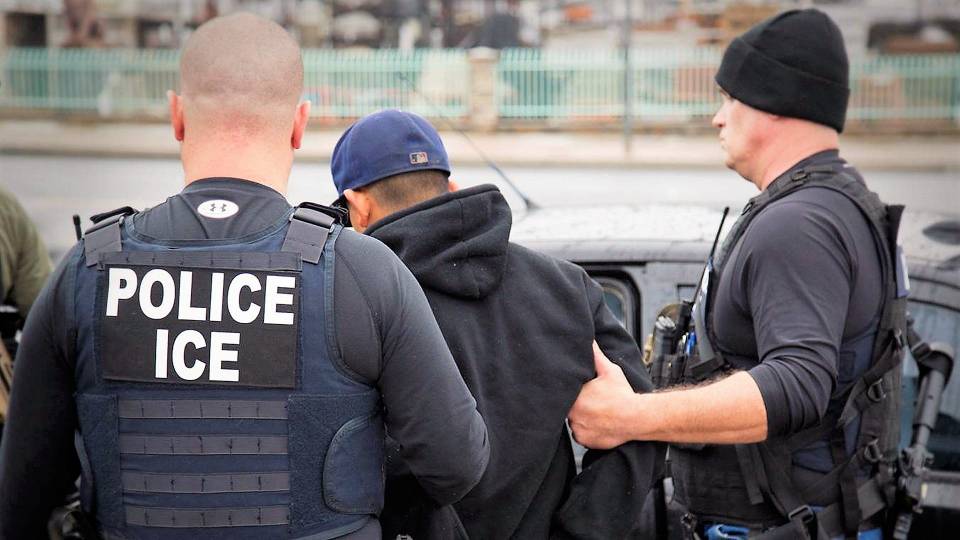Arrests on Civil Immigration Charges are up 38% in 100 Days Since Trump's Executive Order
Federal immigration agents have arrested more than 40,000 people on civil immigration charges since President Trump signed executive orders expanding the scope of deportation priorities in January, a 38% increase over the same period last year.
Immigrations and Customs Enforcement acting Director Thomas Homan said in a press call Wednesday that Trump has “opened the aperture” of charges that dictate what immigration agents are permitted to prosecute, a departure from the Obama administration’s prioritization of immigrants in the country illegally who have serious criminal convictions.
“There is no category of aliens off the table,” Homan said.
In late January, Trump stripped away most restrictions on who should be deported. A Los Angeles Times analysis revealed that more than 8 million people who crossed the border illegally could now be considered priorities for deportation.
Trump’s orders instruct federal agents to deport not only those convicted of crimes, but also those who aren’t charged but are believed to have committed “acts that constitute a chargeable criminal offense.”
Homan said that, in his estimation, federal agents are happier with Trump’s directives than they were under Obama’s more cautious approach.
“When officers are allowed to do their jobs, morale increases,” said Homan, who also served under Obama. “I think morale is up.”
Homan said the paucity of people trying to enter the country illegally, a number which has reached a record low, means agents have more time to spend on removals from the nation’s interior.
Migrant advocates were quick to condemn the administration’s priorities.
Addressing claims by John F. Kelly, Trump's secretary of Homeland Security, that the administration is only focusing on criminals, and Wednesday’s numbers, Frank Sharry, executive director of America’s Voice Education Fund, said the majority of people targeted cannot be considered “serious criminals.”
“These guys spin, distort, exaggerate, and dissemble almost as much as the president they work for,” Sharry said. “The false claims are aimed at providing cover for an agenda that calls for the deportation of millions. Instead of targeting serious criminals, they are targeting every immigrant they can get their hands on and calling all of them criminals.”
While deportations of migrants caught near the border are generally a quick matter, Homan said, the removal processes for so-called “interior deportations” take longer. He expects the overall pace of removal proceedings to slow down as fewer border crossers are removed and interior deportations make up a larger share of all removals.
Without providing specific numbers, Homan said assaults on federal agents conducting arrests are up 150% over the same period last year. Homan attributes the increase to “noncompliance” — meaning actively resisting arrest.
Federal agents must also contend with jails that refuse to allow ICE agents inside. Such jails contend that immigration enforcement is outside the scope of their duties, and some also say the presence of immigration enforcement agents adversely affects relations with local migrant communities.
Homan said jails that do not allow ICE agents inside to make arrests force the agents to capture migrants on the street, a far more dangerous and expensive proposition.
“If the jail lets them go, we have to send a team of officers,” Homan said. “One officer can make a safe arrest inside a facility. If the jail doesn’t cooperate, we have to go get them.”






















